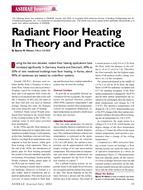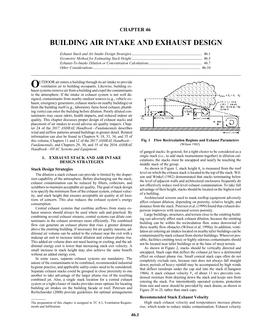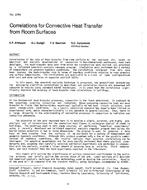Track: Systems and Equipment
Sponsor: 6.1 Hydronic and Steam Equipment and Systems, 5.1 Fans
Chair: Carrie Anne Crawford, Associate Member, Not Applicable, Austin, TX
Fan energy optimization, efficient heating systems installed properly and long-term envelope protection are key elements of an integrated building system design for efficient, quiet, comfortable, resilient, airtight construction. Challenges, solutions and case studies for proper fan selection for comfort, energy efficiency and proper air distribution in commercial building applications are provided. High performance hydronic systems to complement airside delivery in these applications are discussed. Strategies for proper integration of the air and water barrier with the envelope and perimeter mechanical systems for airtight construction and durable performance are reviewed.
1. Fan Laws Are Broken at Your Peril: Strategies for Comfort with Careful Fan Selection
Ginger Scoggins, P.E., Member, Engineering Designs, Cary, NC
This presentation discusses the history and importance of understanding the three basic fan laws (“affinity” laws) when designing and specifying fans, as well as duct layout do’s and don’ts to keep engineers out of trouble. System effect is described with a demonstration of the impact of system effect on improper designs. A case study is provided on a project completed recently that caused significant headaches for all parties involved in the project which could have been avoided if the design engineer had known and utilized the fan laws in advance of the project.
2. Designing for System Efficiency: Are You Making the Grade?
Jennifer E. Leach, P.E., Member, Cummins-Wagner Co, Inc., Annapolis Junction, MD
Ultra-High Efficiency heating water systems are often not operating at design efficiency once the system is turned over to the building owners. With some simple changes to system design and maintenance tasks they can ensure that design efficiency will be maintained through the life of the building. This presentation covers how the utilities connected to the boiler (water, air, vent and gas) can have a great impact on the overall system efficiency.
3. Keeping out the Bad Stuff, Keeping in the Good Stuff: Envelope Systems That Work with Mechanical Systems
Theresa A. Weston, Ph.D., Member, DuPont Building Innovations, Richmond, VA
Energy demand and comfort in high performance buildings relies on minimizing loads and maximizing system efficiency to meet the load. Envelope performance, especially air and water barriers, can have a dramatic effect on space conditioning and air distribution requirements, sizing, and durability. This presentation provides real-world installations that show the positive impact of good envelope designs, and the negative impact of design flaws on HVAC system designs and overall system performance.
Presented: Monday, January 22, 2018, 8:00-9:30 AM
Run Time: 90 min.
This is a zip file that consists of PowerPoint slides synchronized with the audio-recording of the speaker (recorded presentation), PDF files of the slides, and audio only (mp3) for each presentation.
Citation: ASHRAE Seminar Recordings, 2018 Winter Conference, Chicago, IL
Product Details
- Published:
- 2018
- Units of Measure:
- Dual
- File Size:
- 1 file , 72 MB
- Product Code(s):
- D-CH18Sem21


